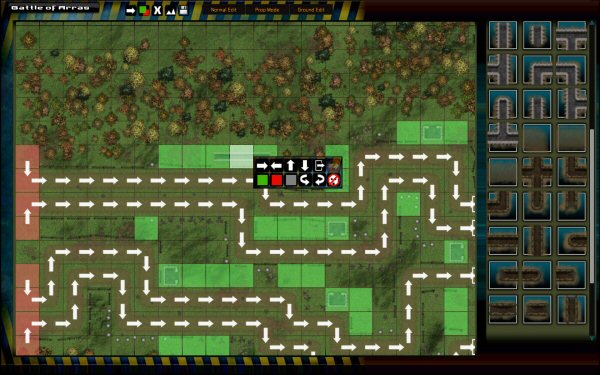I’m working on the GTB map editor. Editing the maps won’t be just for modders, but for everyone, so this is a very important part of the game and I need to get it right. I’m going to really encourage custom maps as a big part of the game, with the singleplayer campaign maps acting purely as examples and tasters of what can be made.
Here is a Work-In-Progress screenshot with some old GSB UI still in place:

Given my plans for it’s use, it’ s important that the editor looks easy to use. I’m wary of making mistakes in terms of UI flow. Essentially, the editor works in 3 modes, which I’m currently calling ‘normal’ ‘prop’ and ‘ground’ which is a bit rubbish, but I need to split things up somehow.
Normal mode, lets you edit individual tiles, by setting up routes, toggling them as attacker or defender-deployable, and placing ‘whole-tile’ items like trench sections, emplacements, or sections of path.
Prop mode is basically where you add, move, rotate and scale decorative items like barbed wire, trees, tank traps, and other fluff that exists to make the world look interesting
Ground mode lets you edit the background tiles, which is again, purely visual.
The window on the right changes with each mode to display the relevant items (tiles / props / textures).
A right click menu, mainly for normal mode, lets you carry out actions on all the selected tiles. The editor supports zooming in and out with the mouse, WSAD movement, drag-selection and ctrl-selection. It adjusts ( a bit) to different resolutions.
The thing that concerns me is the UI ‘flow’ of those three modes. I wonder if I can somehow squash all 3 modes together. Hmmmm.